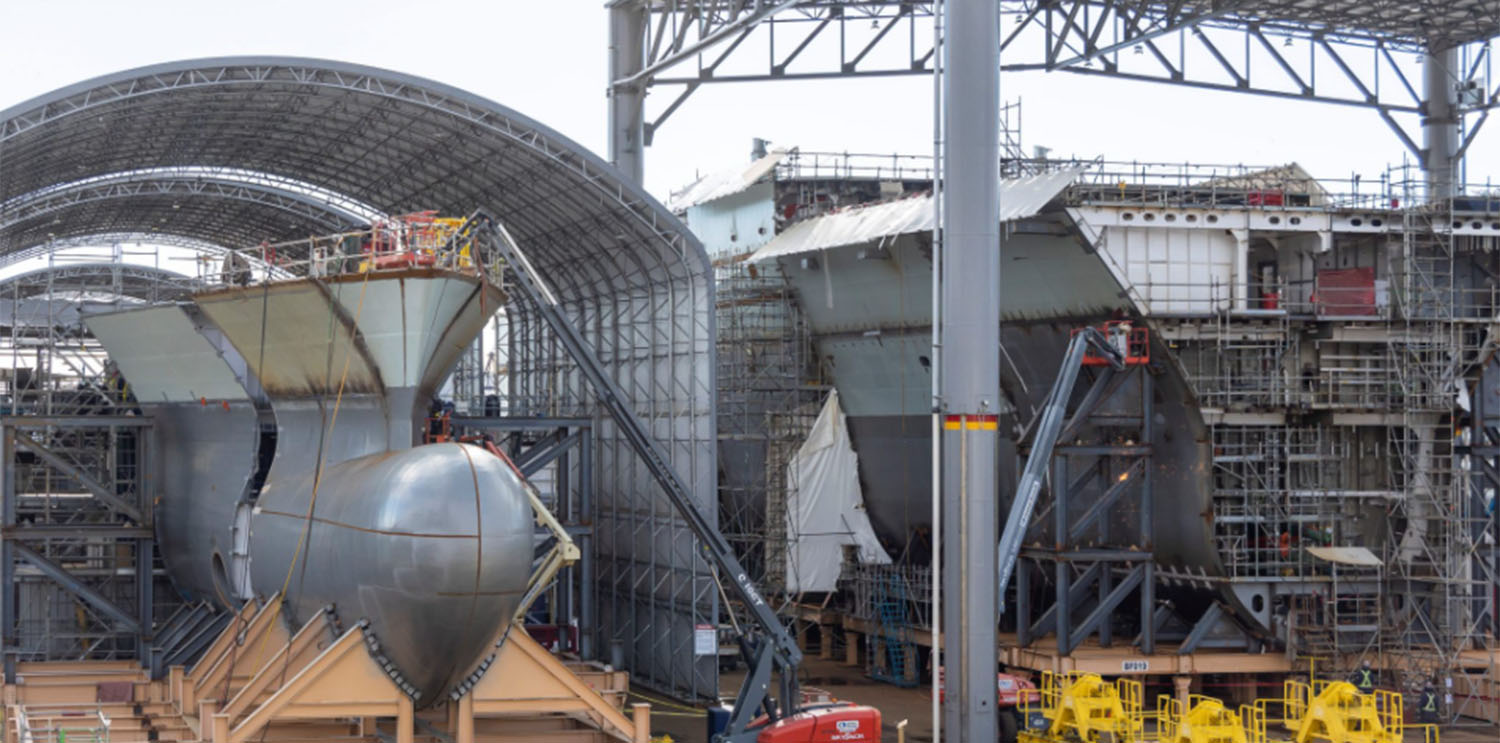The Joint Support Ship (JSS) is one of three ship classes currently being procured by Canada's Navy under the National Shipbuilding Strategy. It is a modified version of the German Berlin-class. The ships currently under construction will replace the supply vessels that have already been decommissioned. Protecteur and Preserver replaced. The German Einsatzgruppenversorger were constructed in the 1990s, the first ship, the Berlinjoined the fleet in 2001. This was followed a year later by the Frankfurt am Main. With the Bonn the trio was then completed in 2013. The Royal Canadian Navy (RCN) sees the length of service of the three ships as an advantage. "We can learn from the many lessons the Germans have learnt from their repeated design revisions and incorporate them into our Canadian version, the JSS," said Rear Admiral Casper Donovan, the RCN's Director General of Future Ship Performance.
The proven design was adapted to the special requirements and standards of the Canadian Navy. A ship was desired that would enable Canada's defence policy to be fully operational. This includes worldwide deployability, both alone and as part of a national or international organisation. The supply vessel should be available for the entire spectrum of military scenarios, including high-intensity combat missions with modernly equipped opponents. Accordingly, a high survivability is required, but also the possibility of joint deployment with future ships and aircraft from the RCN and partner navies. In addition, there are possible spontaneous deployments in humanitarian disasters and diplomatic missions.
The worldwide operational capability means that the climatic requirements also had to be taken into account. Whether in the heat of the Persian Gulf or the cold of the Canadian Arctic, the ship and the systems on board must be reliably available everywhere.

Further modifications were necessary in order to fulfil today's regulatory requirements. This applies, for example, to the propulsion engine, whose emissions fulfil today's regulations. A new engine will therefore operate more economically than on the German ships and be more environmentally friendly thanks to the use of low-sulphur fuels and the integration of scrubbers.
The JSS will be able to accommodate several helicopters; the CH-148 Cyclone will be used. Detail: Due to the size of this multi-role capable helicopter, the flagpole had to be moved.
In addition to the requirements of modern technology, the JSS will also set new standards in terms of crew accommodation. While communal showers and toilets were standard on German ships, the Canadian Navy is now implementing a gender-neutral accommodation concept. Men and women are provided with identical sanitary facilities and there are individual showers and toilets with lockable doors.
In addition to these modifications in keeping with the spirit of the times, the new design also incorporates improvements that the Canadians have learnt from past accidents. In terms of fire protection, for example, the experience gained from the fire on the Protecteur be included.

The ships, which are almost 174 metres long and 24 metres wide, are the largest ever built in Canada. Two units have been ordered that bear the names of their predecessors, Protecteur (JSS 1) and Preserver (JSS 2). With the Protecteur The first unit is currently under construction and is due to be delivered to the navy in 2023. With the two Joint Support Ships, the Royal Canadian Navy will receive robust and reliable ships in the coming years that will enable it to flexibly carry out supply missions and other tasks worldwide.
Text: mb; Illustrations: Seaspan Shipyards










